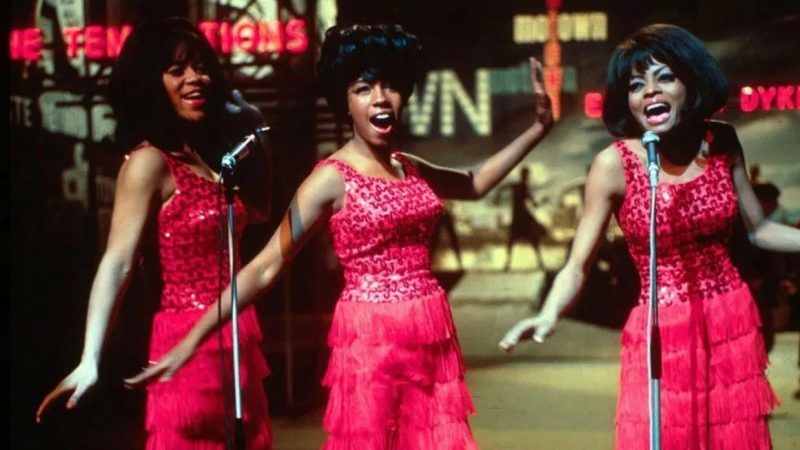Like the Best of Motown Songs, Hitsville Rises to the Top
This Showtime documentary sings. You should listen.

Hitsville: The Making of Motown. Showtime. Saturday, August 24, 9 p.m.
Scene: The crowded, smoky (not Smokey; we'll get to him in a minute) room in the scruffy Motown headquarters at 2648 W. Grand Boulevard in Detroit ("You don't get more 'hood that that," recalls one company executive), where the label's quality-control committee is meeting to decide which records to release this week.
Most of the members are indifferent to the disc under consideration. "It doesn't do anything to me, particularly," sniffs one. And then that bass line comes up: duh-du-duh, duh-du-duh, and David Ruffin's voice, pleading even when the lyrics aren't, "I got sunshine, on a cloudy day…," and ohmygod, was anybody really thinking even for a fraction of a nanosecond that they wouldn't release "My Girl" and ohmygod, what if they hadn't and ohmygod what a moment.
There are hundreds or maybe thousands of moments just like this one—intimate, fascinating, joyful—in Showtime's Hitsville: The Making of Motown, which is arguably one of the finest music documentaries ever produced.
No label in the world produced more great records than Motown did between its founding in Detroit in 1959 and the move to Los Angeles in 1972, the period covered in Hitsville.
From smoking, sexually charged shouters like Martha Reeves and the Vandellas' "Heat Wave"to heartbroken torch songs like Smokey Robinson and the Miracles' "Ooh Baby Baby," from the exultation of the Jackson 5's "ABC" to the feverish paranoia of the Four Tops' "Standing in the Shadows of Love," the Motown catalog shattered every social, racial and musical divide in America. Forget Woodstock; Motown was the pounding musical pulse that drove kids wild in the '60s. It's an epic tale with a throbbing backbeat, and Hitsville strikes every note.
Certainly it helps that Motown founder Barry Gordy cooperated with the project and even gets a producer credit. (That does not stop the documentary from covering some of the company's uglier secrets, including Gordy's tempestuous relationship with Diana Ross.) His previously unseen personal archives contributed some of the most penetrating moments of the documentary, like the audio tape of that quality-control meeting and film of a private audition by a 10-ish Michael Jackson, already moonwalking, and his brothers.
But Gordy's literal presence in the documentary is even more important. With his top lieutenant, Smokey Robinson, he's in almost every scene, narrating if not being interviewed.
He and Robinson reminisce, schmooze, occasionally argue about when or why a record was released, and even make bets on the outcome. (If you're tempted to join in the action on who recorded "I Heard It Through the Grapevine" first, Marvin Gaye or Gladys Knight and the Pips, be careful.)
After brief stints as a boxer and an auto worker in the late 1950s, Gordy had turned himself into a songwriter of no small skill, with author credits on Jackie Wilson's "Lonely Teardrops" and Barrett Strong's "Money," among others. But his real genius was spotting talent and coaching it.
He tough-loved the young Robinson's songwriting: "You rhyme stuff pretty well. But your songs, they're just rambling." He hired wannabes like Martha Reeves and Norman Whitfield (who later would write and produce many of the Temptation's psychedelic-era hits) for peanuts as secretaries and gofers, certain that they would eventually show talent, even though nobody else at Motown believed it.
And he kept the label's flighty kids on track. Marvin Gaye variously wanted to quit singing to play football, become an astronaut, and turn himself into a Frank Sinatra-style crooner. Each time Gordy talked him out of it.
And the late Gaye himself, in an archival interview, explains how Gordy helped him put together his first hit during a chance late-night encounter in the Motown studio. Noodling at the piano, Gaye was trying to write a jazz number. "That's not gonna sell any records," Gordy warned him. "Why don't you put this chord on it, right here?" That was followed, Gaye recalled, by a cascade of "Yeah-yeah-yeahs!" and "Doo-doo-doo-pows!" What emerged by the wee hours was "Stubborn Kind Of Fellow," Gaye's first chart hit.
These sorts of musical anecdotes are scattered throughout Hitsville. Robinson, with one hand on the piano hitting notes and another waving in the air illustrating chords, explains how the opening guitar riff of "My Girl" was devised, then relates how each of the song's layers was added—first the vocals, then the strings, finally the horns. In another scene, he recalls calling everybody in the building into the studio—still-a-secretary Martha Reeves, some Supremes, two Temptations, the Marvelettes—to provide the call-and-response chorus for the Miracles' song "Mickey's Monkey," turning a string of illiterate gibberish ("lum-de-lum-de-li-o") into street poetry.
There's so much more: the "charm school" where Motown artists were taught how to walk. ("You do not protrude the buttocks.") There's the white sales manager whose ability to "go Sicilian" with slow-to-pay record distributors convinced much of the industry that the Mafia secretly controlled Motown. (It didn't help that the manager, when told that a swanky restaurant would not admit some of his colleagues because "we don't serve black people," growled: "That's okay, I don't eat black people.")
And, painfully, this all leads to the eventual revolt of many Motown artists—including Diana Ross, Marvin Gaye and Stevie Wonder—against the company's assembly-line structure that Gordy had borrowed from his years at Ford. "You can have the greatest assembly line in the world," Gordy recalls sadly. "But people are not cars. Eventually they're going to express themselves outside the system."
He may have been too heavy-handed. But it's hard not to forgive a man whose advice defined the best side of the 1960s: "Come on, every guy, grab a girl, everywhere, around the world, they'll be dancing, dancing in the street… ."


Show Comments (11)